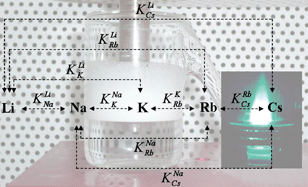Ionic physisorption on bubbles induced by pulsed ultra-sound
Abstract
Ion flotation processes involve the use of bubbles in order to separate ionic species from a mixed solution. Due to bubble interfaces we may assume null curvature at the molecular scale, where selective ion adsorption might be more easily investigated than with liquid–liquid


 Please wait while we load your content...
Please wait while we load your content...